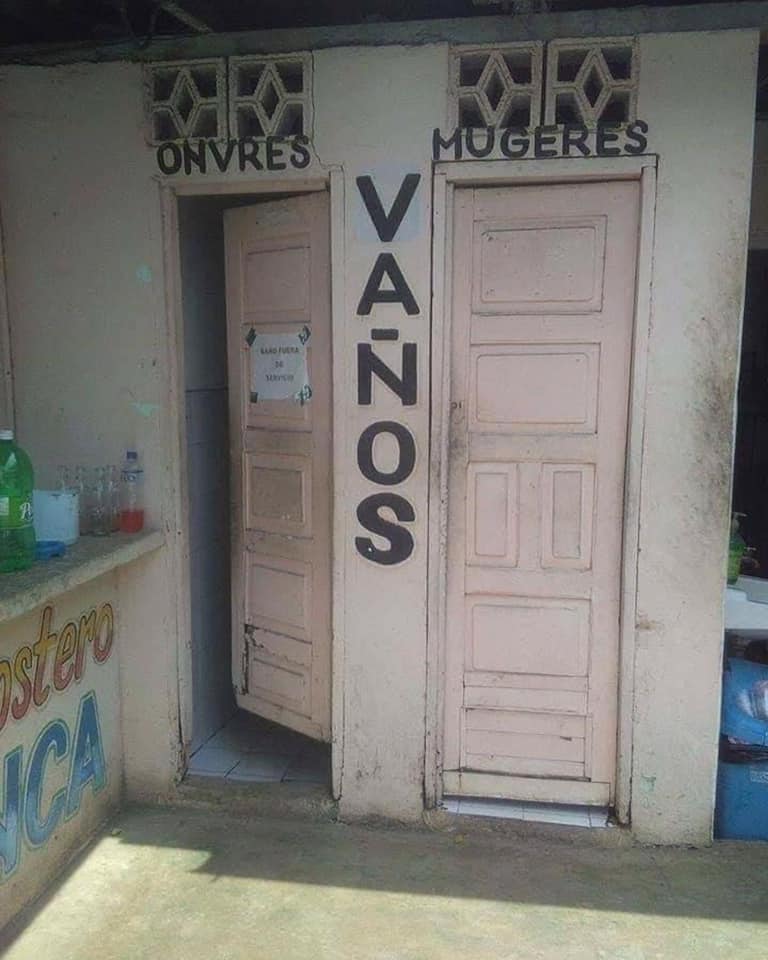One often hears Spanish mentioned as an example of a language with good orthography, and there's a lot of truth to that. Spanish words are written as they're pronounced, and Spanish dictionaries don't even have pronunciation guides. But the choice of letters for sounds is in fact quite odd.
Spanish vowels are fine: there are only five vowels, always the same length, and a dozen or so diphthongs and tripthongs. The only oddity is that the Romance open e and o became ie and ue, respectively, but the orthography reflects that change, so it's not a problem. The problem is the consonants, where a very regular system is hidden by odd spelling.

Here is a summary of the problems:
-
Spanish speakers think of b and v as being the same sound, pronounced b after a pause or nasal and v otherwise. Of course they can hear the difference, for example if you use one sound where you should use the other. But the current spelling doesn't use the two letters consistently for the two sounds.
The same is true of g as in gota, which also opens to ɣ as in agotar between vowels. But in this case, our alphabet doesn't have a letter for the second sound.
Finally, the same alternation occurs with d as in dios, which after a pause, nasal or l becomes ð as in adios, and with two of the three sounds written with y: ɟ͡ʝ as in ya and ʝ̞ as in tuya. The alphabet also lacks different letters for these sounds. Several sounds are represented by one letter before a o u and a different letter or digraph before e i: c becomes qu, g becomes gu, z becomes c, j becomes g. In the two digraphs, the u has to be written ü when it should be pronounced separately. Several sounds have to be written with digraphs: ch ll rr hu H is silent, so people don't know when to write it. Dialects where the th sound (θ, as in cena) has been lost pronounce c/z as s, but don't know which to write. Dialects where the ly sound (ʎ, as in llena) has been lost pronounce ll as y, but don't know which to write.
In addition to the problems above, Spanish - the world's fourth most spoken language with more than 330 million speakers - has substantial dialectical variation. In seseo dialects, including Andalusian and American Spanish, the th sound is missing altogether, and z is pronounced as s. In yeísto dialects, which include all the Spanish spoken outside of Castille and a strip of the Andes between Colombia and Paraguay, the ly sound is missing altogether and ll is pronounced as y. There are also dialects in which s is always pronounced as z (ceceo) or dropped (Cuba), in which ll is pronounced as sh (Argentina), in which x represents kh (Mexico), in which y is never affricated (Rio de la Plata), and many more.
When Spanish is written in the Roman alphabet, all these dialects write the words alike (with minor exceptions): Bilbaoans and Balboans agree that the word for match is spelled cerilla, they just don't agree whether it's pronounced therilya or seriya. But when writing Spanish in the Musa alphabet, both dialects write it as they pronounce it, and we say they have two different words for match. That's no different from noticing that they also have different words for many other things, too.
Consonants
| | papel | | total | | chucho | | coquilla |
|---|---|---|---|---|---|---|---|
| | bomba | | donde | | ya | | gringo |
| | habia | | adios | | tuyo | | hogar |
| | fósforo | | cerveza | | shopping | | jengibre |
| | mismo | | ninguno | | año | | shopping |
| | asno | | local | | llama | ||
| | siesta | | orador | | recorren |
Vowels and Semivowels
| i | ui | ĭ | |||
|---|---|---|---|---|---|
| e | ie | ue | ĕ | ey | |
| a | ia | ua | ay | au | |
| o | io | uo | ŏ | oy | |
| u | iu | ū | uy |
The first column shows the five vowels. They are written high when accented, low otherwise. The fourth column shows the "lax" versions of four of those vowels, which are generally used in closed syllables (those with a final consonant), including closing diphthongs. For example, the Spanish word fin sounds more like English fin than like feen, but final doesn't sound like finnal. The exact rules are complicated and vary between dialects, so listen for the different sounds: they're not hard to hear. The other columns show diphthongs. The triphthongs (e.g. Uruguay) aren't shown, but they're straightforward.
Transcriptor
The transcriptor is a tool for converting Spanish from the Roman Alphabet to Musa:
Samples
Now that you've learned the letters, why don't you try reading some quotes?
| |
| No engendré yo hijo que fuese contra mi tierra. |
|
|
|
Yo no hablo de vengazas ni de perdones; el olvido es la única venganza y el único perdon. |
|
|
|
Si no te conozco, no he vivido; si muero sin conocerte, no muero, porque no he vivido. |
| |
| Juventud, divino tesoro, ¡ya te vas para no volver! |
| © 2002-2025 The Musa Academy | musa@musa.bet | 16jan25 |
